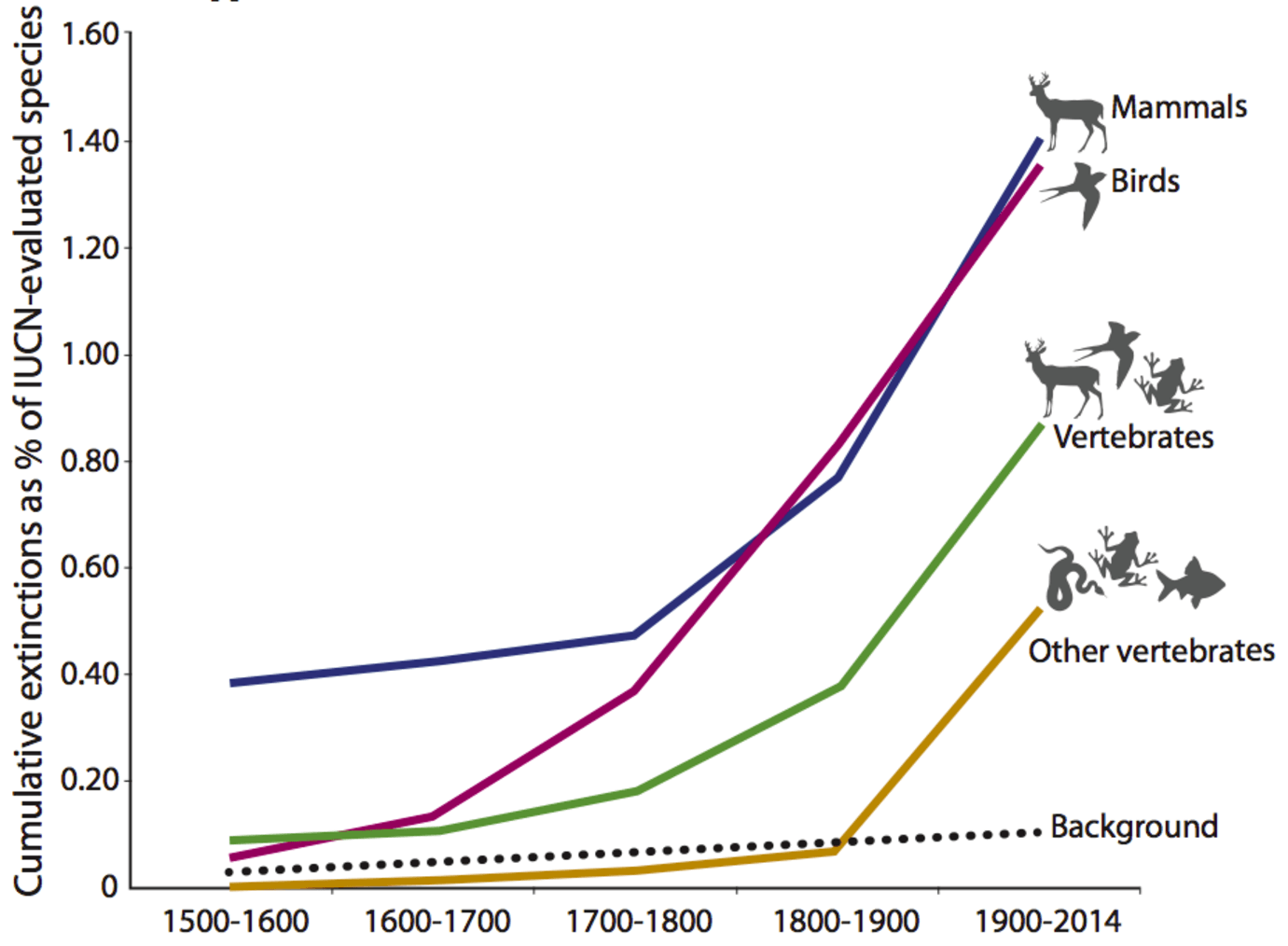A 6th Mass Extinction
18th Century Dodo Illustration (credit: public domain)
Fossilized bones inform us the Earth has undergone multiple mass extinction events. The most well known saw the demise of the dinosaurs at the end of the Cretaceous era but other mass extinctions have occurred. From the Ordovician era nearly 460 million years ago through the Cretaceous era 66 million years ago, five major extinctions are recognized. Research is now beginning to indicate a 6th one is now underway.
Publishing in Science Advances researchers from Mexico, Stanford, Princeton, and elsewhere, say we are now entering a new mass extinction phase. Their study Accelerated modern human–induced species losses: Entering the sixth mass extinction shows, even with extremely conservative estimates, that species are disappearing nearly 100 times faster than the normal background rate between mass extinctions. The researchers used,
"a two vertebrate species extinctions/per 10,000 species/per 100 year period as their background rate. By this estimate, the number of species that have gone extinct in the last century would have taken between 800 and 10,000 years to disappear. These estimates reveal an exceptionally rapid loss of biodiversity over the last few centuries, indicating that a sixth mass extinction is already under way"

Species xxtinctions 1500-2015 (credit: Starfish Initiatives, AUS)
The lead author in the study, Gerardo Ceballos of the Autonomous University of Mexico, said: "If this (extinction rate) is allowed to continue, life would take many millions of years to recover, and our species itself would likely disappear."
As individual species are removed from an ecosystem, so are critical services such as crop pollination by honeybees and wetlands' and water purification by plants, among many others. At this new rate of species loss, the biodiversity losses and ecosystem benefits will occur within three generations commented Paul Ehrlich, another of the study's authors. Estimates by the International Union fo the Conservation of Nature (IUCN) show the specter of extinction hangs over ~41% of all amphibian species and ~26% of all mammals. Ehrlich continues: "There are examples of species all over the world that are essentially the walking dead." Ehrlich provided more of his perspective in a video released by Stanford University.
The last mass extinction allowed a small, mouse-like creature, that survived would evolve into every mammalian life form known today, including ourselves. The dodo is the poster child for an extinct species but the bird's position may be taken up by many others this century. Hopefully we will act more wisely to prevent that happening, if for nothing else our own sake.
WHB